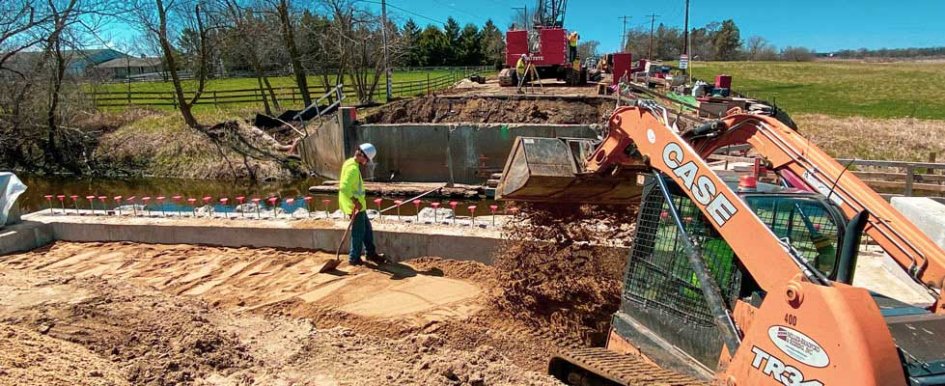
When Don Pearson struck out on his own to start Tenex Contractors in early 2021, he brought along a trusted partner: the enterprise-class software for estimating that he was familiar with.
The heavy-construction estimating and operations veteran has used the same specialized application to manage bidding for close to two decades. Most recently, it helped him turn out up to 1,200 bids a year as chief estimator for a $200 million company. So, when he started his own smaller operation, reverting to spreadsheets was not a consideration.
“When you’re starting or running a business based on competitively bid contracts as the main source of income, the importance of good estimating software just cannot be overlooked,” said Pearson. “It’s a critical investment.”
Tenex is based in Burlington, Wisconsin, and performs grading, excavation and road construction across the southern part of the Badger State. Jobs are split evenly between public and private projects. Pearson anticipates they will skew more to the public department of transportation (DOT) sector going forward.
The company came close to reaching its goals for revenue in its first year. That was despite getting a late start in a region where weather can limit the length of the season. A backlog of bids already won and strong development activity in the region both indicate continued growth in 2022.
Working faster and increasing accuracy can be opposing propositions in estimating, but Pearson says that combination is the defining benefit that specialized estimating software provides over even the best spreadsheet-based solutions. “The best part of the program is that it speeds up the process and increases bidding accuracy and consistency, allowing us to bid more projects and obtain more work,” he said. Tenex was up and running within a week of purchasing its estimating software application, an unusually quick start up enabled by Pearson’s previous experience. He frequently works remotely and can easily log in and access the software from anywhere.
Pearson creates about 200 bids annually for his new company. Still, he will rely on the same features he took advantage of at the larger company. He calculates that bidding with specialized software is at least two times faster than bidding with Microsoft Excel but cautions that speed is only part of the story. “You need to feel comfortable with the accuracy of the numbers and be able to change overhead, margins or other variables quickly,” he said. “You just can’t do it fast enough with Excel, so you invariably end up compromising and plugging in higher, safer numbers.”
Specialized software applications for heavy construction estimating allow contractors to establish prepopulated databases of cost items, templates and structures for the specific type of work they do and how they do it.
A contractor can use these building blocks to streamline the process instead of having to start from scratch, plug in individual items and hunt for costs. It also gives estimators confidence in their numbers.
Beyond cost databases, leading software platforms include other important features. Audit trails can identify who did what to the bid and when. Error check wizards can scan for potential mistakes that estimators may have overlooked. Software programs also come with built-in databases for DOT bid items for each state and they automate the process of downloading DOT bid forms, populating them and then uploading the finished bid.
Pearson handles bids for his new company himself, but he says the ability for multiple estimators to collaborate efficiently is a big advantage estimating software provides over spreadsheets for larger companies. He also says ease of use is vital and calls built-in capabilities for quickly analyzing, comparing and incorporating bids from subcontractors and vendors a must-have option.
Building bids faster leaves more time for strategy, and it’s vital for software functionality to assist with pricing and distribution strategies, particularly for public projects, according to Pearson. These capabilities proved especially valuable, as the pandemic and related market factors made 2021 an unusually tough year to start a new company.
Pearson was also under pressure to learn market conditions specific to an unfamiliar region of Wisconsin along with the ins and outs of how his competitors in that area were bidding. Aggregate pricing, for example, was up to 50% higher than it was in the region where he previously worked. More important was the ability to figure out how his new competitors were bidding on public DOT projects and where they were putting markups and margins. “I don’t know what I would have done without the software,” he said. “The software allowed us to learn from the losses and learn quickly.”
“We all have many of the same expenses and are basically doing the same tasks,” Pearson said. “We take item-priced bid results and then easily duplicate estimates and make various adjustments to locate the needed focus areas for adjustments. This bid pricing and distribution strategy is more important than I ever anticipated, and we’ve saved valuable time zeroing in on where our competitors were beating us without having to guess.”
Pearson points to a recent nearly $1 million municipal project where estimated and actual costs varied by only $4,000 as an example of how precise the software allows him to be. “I continue to see a lot of contractors bid very competitively,” he said.
